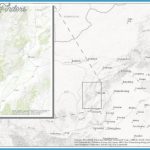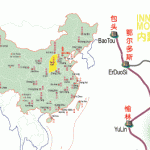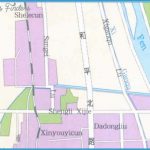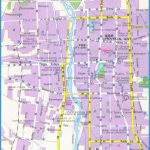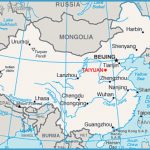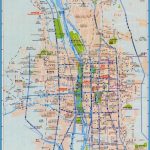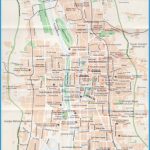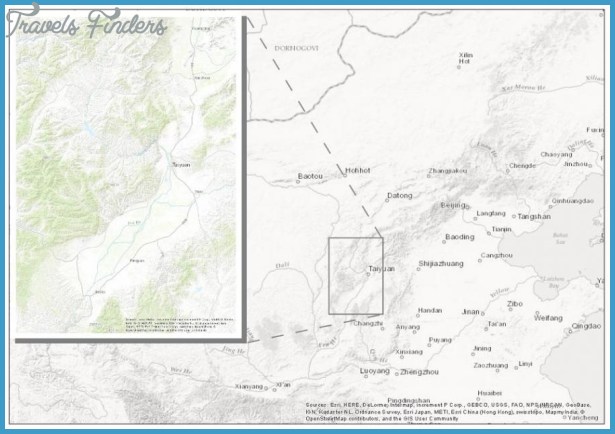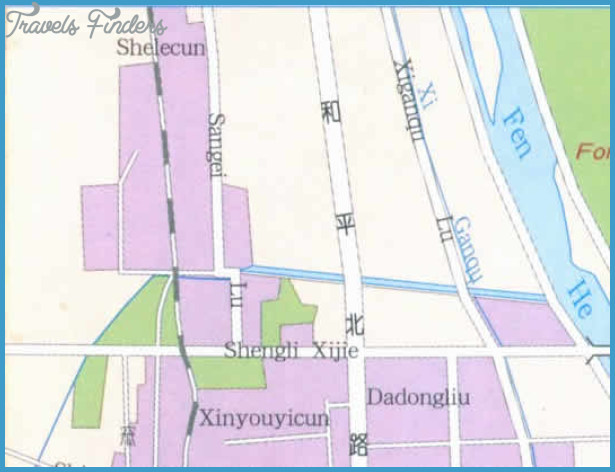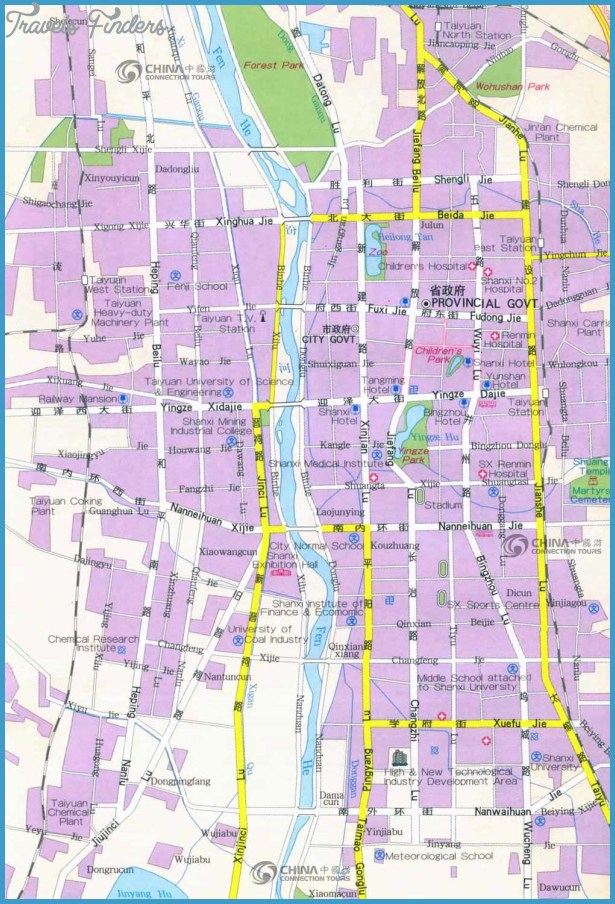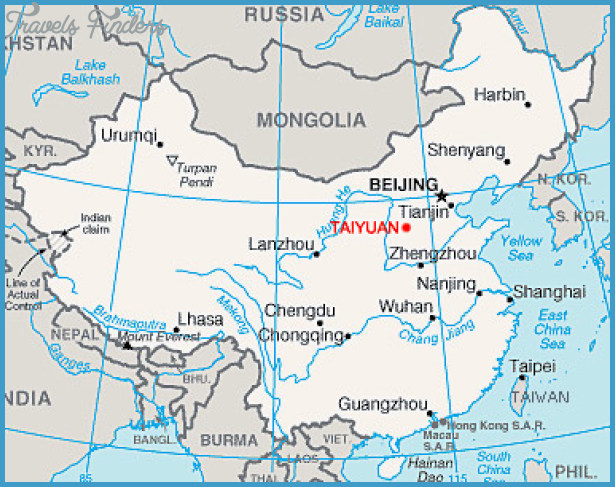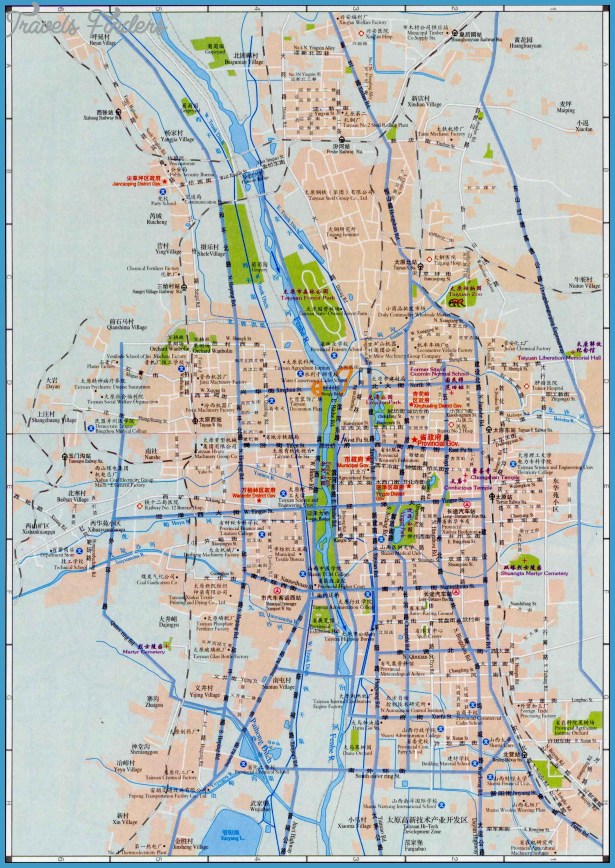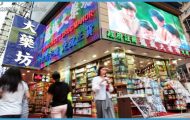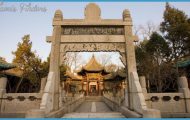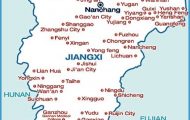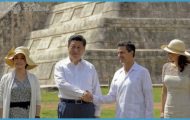A few miles south-west of the little town of Hengchun lies Lake Lungluan, 175ha/437 acres in area and up to 3-5m/111/2ft deep. It contains large numbers of fish and every autumn thousands upon thousands of migratory birds settle on its banks. Everywhere on Taiwan’s south coasts will be found tropical vegetation, which has germinated from seeds brought here by wind and sea from the islands of south-east Asia. Lake Lungluan near Henchun
Chihpen, on Taiwan’s south-east coast, is a popular spa town; it lies 15km/ 9 miles from the port of Taitung which was at one time extended by the Japanese. Chihpen Taitung
Taiwanese Islands of Penghu, Lan Yu and Lu Tao
The 64 Penghu or Pescadores Islands (Penghu Lieh Tao) in the Formosa (Taiwan) Strait have a combined area of 127sq.km/49sq. miles and a population of 100,000. Penghu Lieh Tao (Pescadores)
Their beautiful beaches make the islands popular with holidaymakers. However, they should be avoided between October and March, because it can be very stormy during those months. The name “Pescadores” (meaning fishermen) stems from the Portuguese who fished these seas in the 16th c. Bathing beaches
Makung, the chief town on Penghu island, is a busy fishing port. Interesting sights include the bridge (5541m/6060yd long including ramps at either end) over Penghu Bay, Matsu Temple orTemple of the Goddess ofthe Sea, dating from 1539 and the oldest of all Taiwanese temples, and the Holy Banyan Tree, the roots of which cover half a hectare/1 % acres of thetemple courtyard. Makung
The island of Lan Yu (“Isle of Orchids”) is 45sq.km/17/2sq. miles in area and lies in the Pacific Ocean 75km/47 miles off the south coast of Taiwan. On it live 2600 descendants ofthe Yami, immigrants who settled here before the Chinese came. Living mainly from fishing, the Yami still sail their traditional black and white, canoe-like boats and live in flat-roofed, low-built houses which afford protection from the frequent typhoons. Lan Yu
Naturalists and all those interested in botany will find on the island an incredible variety of orchids. All who like a beach holiday will also get their money’s worth here. Orchids
The Pacific island of Lu Tao (Green Island, area 16-3sq.km/6-3sq. miles, pop. 3800), about 30km/19 miles east ofthe Taiwanese port of Taitung, is catering more and more for tourists. It offers excellent facilities for bathing, diving, shell-collecting, fishing and walking. Lu Tao
Taiyuan Chinese equivalent Capital of Shanxi Province Altitude: 800m/2626ft. Area: 3044sq.km/1175sq. miles Population: 1,840,000 (conurbation 2,230,000) Taiyuan lies in the centre of Shanxi province in northern China, on the northern edge ofthe fertile Taixuan Basin, at 112°32’E and 37°42’N. The town is 11 hours by rail or 1’/2 hours by air from Beijing. In addition there are regular flights from a dozen other Chinese cities, including Situation and Communications
Taiyuan Shanghai (2 hours), Canton (2’A hours), Nanjing (3 hours), Xi’an (1 Vb hours) and Tianjin (1V4 hours). History There were settlements in this region back in Neolithic times. The town was founded about 2400 years ago, under the name of Jinyang. It found itself under constant attack from tribes from the north who used it as a base for further conquering sorties. In the early 7th c. Li Yuan led a peasants’ uprising, overturned the Sui dynasty and in 618 established the Tang dynasty. Wars brought about the destruction of Jinyang in 979. It was rebuilt three years later and renamed Songcheng. In 1375 the town expanded enormously, became the seat of government for the Taiyuan region from which it took its name. The viceroys of Shanxi province resided here during the Ming period (1368-1644). The “White Lotus” secret society, which had been in existence since the 11th c„ supported the xenophobic movement which led to the outbreak ofthe Boxer Rebellion.
Today Taiyuan is not only the political and cultural focus of Shanxi province but also one of northern China’s major industrial centres.
Located in the east ofthe city, the Provincial Museum is housed in a former Jin (1115-1234) temple; on display are finds from the Neolithic Age, as well as bronzes, lacquer-work and paintings from various dynasties.
Another department of the museum can be found in the Chungjang Gong Palace to the west.
The Temple of Respect for Kindness opposite the Provincial Museum dates from the Tang era (618-907). In 1381 Zhu Gang, the third son ofthe emperor ofthe day, ordered that it be completely rebuilt in honour of his mother, the empress. From the same period are the three Buddha statues, each 8-5m/28ft high, of Guanyin, Goddess of Mercy (with a thousand arms, a thousand eyes and eleven faces) and of the bodhisattvas Wenshu and Puxian, which are to be found in the Hall of Great Compassion (Dabei Dian). The temple also contains large numbers of Buddhist scriptures from the Song, Yuan and Ming period (10th 17th c.).
The Temple of the Double Pagodas in the south-east of Taiyuan was so named because of its two pagodas, each 54m/177ft high, which serve as the city’s emblem.
A winding internal staircase enables visitors to climb up to the 13th floor of either pagoda, from where they can enjoy a superb view over the city.
The Taoist caves on Mount Longshan, 20km/12’/2 miles south-west of Taiyuan, date from the Yuan period (1271-1368). They contain more than 40 sculptures and inscriptions.
25km/15 miles south-west of Taiyuan, at the foot of Mount Xuanweng-shan nearthe source ofthe Jin river, lies the Temple of Jinci. This mighty shrine, thought to be dedicated to Prince Shuyu, was founded about 1400 years ago, but has been frequently extended over the centuries right upto the present day. It now comprises about 100 halls, palaces, towers and pavilions. When the town was destroyed during the conflicts of 979 the temple remained unscathed.
Entrance to the complex is to the south, near the old Gateway ofthe Clear View (Jingqing Men). Visitors then go direct to the Terrace of the Water Surface (Shuijing Tai), which is used as a theatre, and will see the Shengy-ing Lou Pavilion on the left. They then pass overthe Bridge ofthe Meeting with the Immortals (Huixian Qiao) and come to the Terrace ofthe Iron Men (Jinren Tai), in the corners of which stand four iron statues dating back to the 11th c. A doorway then leads to the Opera Hall (Xiandian; 12th c.) and across the Flying Bridge, supposed to symbolise a bird in flight, to the Hall of the Holy Mother.
This hall was built between 1023 and 1031 in memory of Yijiang, the mother of Prince Shuyu. It contains 43 painted terracotta statues; the largest in the wooden niche represents the Holy Mother, the other 42 are ladies of her court in varying poses and with different facial expressions.
Near the temple stands an extremely ancient cypress tree, which dates back to the Zhou era (1066-221 B.C.). Another very ancient tree, an acacia which is some 1400 years old, stands a few yards away in the Temple of Guan Gong.
Further to the west is the 16th c. Temple ofthe Goddess of Water (Shuimu Lou).
In front of the temple bubbles the Spring ofthe Fountain of Youth (Nanlao Quan), the main source of the Jinshui river; by it towers an eight-storeyed 6th c. pavilion.
South-east of the Temple of the Holy Mother this spring also bubbles forth under a pavilion.
To the north lies a system of caves, in one of which the academic and calligrapher Fu Shan (1608-84) is thought to have lived.
To the south-east of Shanli Quan Spring stands the Temple of Prince Shuyu of the Tang (Tang Shuyu Ci), and in front of it is the Pavilion of the Tang Stela (Tangbei Ting), which houses an inscribed pillar with 1023 characters engraved by the Emperor Taizong in 646.
The twenty or more caves on the slopes of Mount Tianlongshan 40km/ 25 miles to the south-west date mainly from the Tang period (618-907); some are even older. Unfortunately, most ofthe sculptures are very poorly preserved, but the Buddha statue in Cave 9 is in good condition.
Some 60km/37 miles south-west of Taiyuan, in the Jiaocheng district, a Buddhist temple dating from 472 has been built on a steep rock-face -hence its name. It is the Shrine ofthe Denomination ofthe Land ofthe Pure (Jingtuzong). In the second half of the 19th c. it was almost completely burned down; only the Pavilion of a Thousand Buddhas (Qianfo Ge) remained intact. The edifice was restored to its former glory when it was rebuilt in 1955, and it is now home to more than 70 sculptures in wood, clay and wrought-iron.
The Hall of the Heavenly Kings (Tianwang Dian) dates from 1605 and is the oldest building in the complex.
The village of Xinghuacun, 105km/65 miles south-west of Taiyuan, is known worldwide for its Fen Jiu and Bamboo liqueurs (Zhuyeqing). They are both distilled from corn, using pure water from the Heavenly Spring (Shenjing). Such spirits have been produced in Xinghuacun for 1500 years and still make an important contribution to its economy.
The little town of Pingyao, 107km/66 miles south of Taiyuan, is only 2-1sq.km/3/4sq. mile in area, and has succeeded in retaining its medieval appearance and atmosphere for more than 600 years. Its defensive walls, streets, houses and temple buildings are for the most part well-preserved. The town walls are 6157m/6754yd in length, 6 to 10m/20 to 33ft high, defended by six gate-towers, 72 small watch-towers and 3000 merlons which represent the most famous disciples of Confucius and his 3000 pupils.
This temple 7km/41/2 miles south-west of Pingyao covers an area of some 1-5ha/4’/4 acres; founded in 571, it was rebuilt during the Ming dynasty (1368-1644). There are three courtyards around which are grouped ten temple halls. Its 2052 clay sculptures make it a truly representative museum of the Buddhist sculptor’s art.
The Temple of the Great Victory, 200km/124 miles south-west of Taiyuan near the town of Hongtong, includes the well-known Pagoda of the Flying Rainbow (Feihong Ta). This originally dated from the year 147, but was destroyed together with all the other temple buildings in a heavy earthquake in 1303. Between 1515 and 1527 a new pagoda – 47m/154ft high, octagonal in shape, with three storeys, and clad with glazed bricks coloured red, orange, yellow, green, blue and violet – was erected on the old foundations. Visitors who climb the internal staircase can admire the richly-decorated walls.

